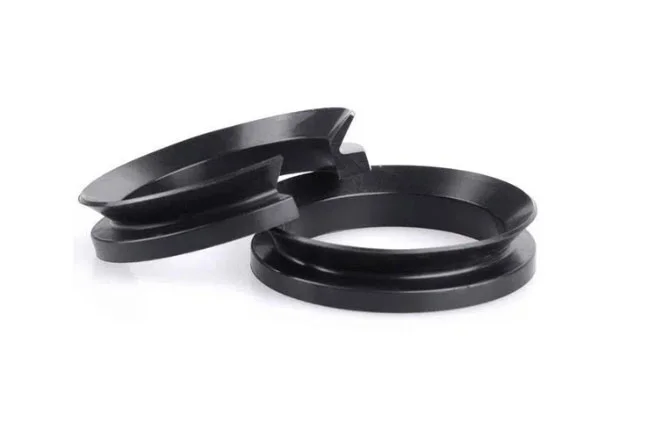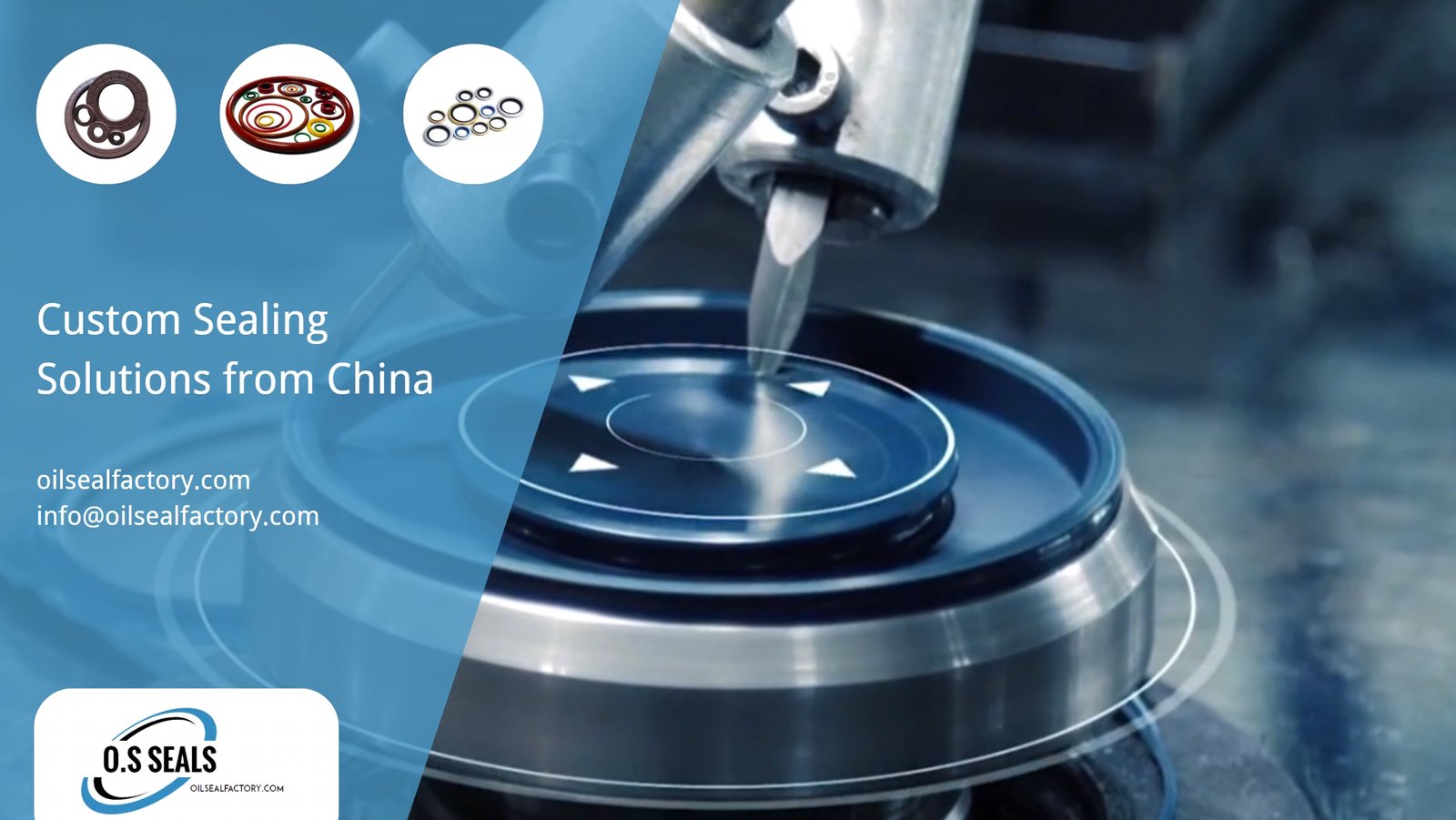Before learn how to improve the leakage of rubber seals, we should know some basic knowledge about this item:
1. The characteristics of rubber seal material:
(1) Viscoelasticity
The material of rubber seals is affected by temperature and time during deformation and deformation recovery, resulting in the stress relaxation and creep phenomenon of the material specification of rubber seals. Under the action of vibration or alternating stress, hysteresis loss occurs.
(2) High elasticity
The seals can maintain elasticity specification at a certain temperature due to its recoverable deformation. If its elastic modulus is low, its elongation deformation is large.
(3) There is aging phenomenon
Such as metal corrosion, wood decay, rock weathering, the rubber will also face its problem due to environmental changes and aging phenomena. So the sealing performance will be reduced, life declines.
(4) Vulcanized
It must be vulcanized before use, except for thermoplastic elastomer.
(5) Electrical insulation
The same as plastic, rubber is also a electrical insulation material.
(6) Have to add the compound
Small specific gravity, low hardness, good softness, good air tightness and other characteristics, all belong to the rubber performance
2. Physical and mechanical properties
(1) Fixed-elongation stress:
Also known as fixed-elongation strength, refers to the load borne by the sample per unit area when it is stretched to a certain length. The unit of measurement is the same as the tensile strength, which reflects the strength of the rubber material’s resistance to external deformation.
(2) Tear strength:
The load borne by the unit thickness when tearing the special test piece (with cutting or rectangular shape), which indicates the anti-tearing property of the material.
(3) Tensile strength:
Also known as tensile strength and tensile strength, refers to the load on the unit section of the test piece when it is stretched to fracture.
(4) Permanent deformation:
After the specimen stretched to fracture, the percentage of the non-recoverable part of the standard elongation deformation in the original length.
(5) Hardness:
It refers to the ability of rubber to resist external pressure. It is usually measured by the Shao Er durometer. The hardness range of rubber sealing material is generally between 20 and 100, the unit is Shaw A.
(6) Elongation:
When the specimen is broken, the ratio of the elongation to the original length is called elongation and is expressed in percentage.
(7) Resilience:
Also known as impact resilience, refers to the ability of rubber to recover to its original state after being impacted, expressed in percentage.
3. Some methods to improve the leakage of rubber seals
(1) Mold quality
To save time and cost, more and more sealing parts manufacturers would like to choose the cheaper one and can shorten the time as well. You get what you pay off. It determines the accuracy of the mold will not be high, the quality of products will not be particularly good.
(2) Selection of materials
There is a lot of material that can be used to produce rubber sealant. Which one we should choose to depend on the application of the products. It requires us to know its use environment and requirement. And it is necessary to understand the various features of the materials very well at the same time. In addition to the general requirements for sealing ring materials, the following conditions shall be noted at the same time:
(a) Full of elasticity and resilience;
(b) Appropriate mechanical strength, including expansion strength, elongation and tear strength, etc.
(c) Stable performance, not easy to swell in the medium, small thermal shrinkage effect (Joule effect).
(d) Easy to process and shape, and can maintain precision size.
(e) Do not corrode the contact surface, do not pollute the medium, etc.
The most suitable and most commonly used material to meet the above requirements is rubber, so the sealing ring is mostly made of rubber material.
There is various rubber, and there are new varieties of rubber, design, and selection. We should understand the characteristics of all kinds of rubber, and make reasonable choices.
How to choose the material of the rubber seal?
Each rubber material has its own advantages and disadvantages, and each rubber can be formulated according to different performance requirements.
In the design process, how to choose the right rubber seal material according to the actual situation is very important.
How to choose the material of the rubber seal? We should start with the following aspects:
(a) First of all, it is necessary to consider the substances that the rubber seal needs to touch, in addition to paying attention to whether the rubber seal material can withstand the sealed fluid, such as air, water, oil, steam, and so on.
Attention should also be paid to metal or plastic parts in contact with rubber seals.
For example, if an unsuitable rubber piece is placed with a polycarbonate plastic for a long time, some components of the rubber piece will slowly seep into the contact surface of the two pieces, causing the polycarbonate plastic surface to crack.
(b) In many cases, the rubber seal is used for the main function of waterproof, but then add disinfectant residue in water or other medium is an important consideration, the disinfectant or medium in the water can react with rubber seals, rubber swelling deformation, even decomposition, which affect the rubber sealing function of seal and longevity.
(c) Other factors in the use environment, such as long-term contact with ozone (ozone resistance), use temperature, etc., the temperature resistance of different materials is also different.
(d) In addition to the above factors, also need to consider the rubber seal tensile strength, under pressure, etc.
The above list is just a few common important factors, each product design or application has its own particularity, designers should be based on the specific analysis.
(3) Strict production process
After doing the first two steps extremely well, the production aspect becomes crucial.
These three steps are the key. But it can not eliminate the leakage problem. We also should pay attention to the storage environment, which will also affect the leakage of rubber seals.
(4) Storing Properly
(a) Store in a cool place, but not in direct sunlight. Ultraviolet rays and moisture will accelerate the deterioration of rubber and cause size changes.
(b) Do not open the sealing package unless we use it, to avoid dust sticking or scratch the sealing.
(c) When storing unpacked products, do not stick or bring in impurities on the product, and store them in the original state.
(d) Seals should not be placed near the heat source, motor, or ozone production place.
(e) Do not use wire, rope hanging seals. If storage in this way, it will make the seals deformation, damage the lip mouth.
(5) Installation Correctly
(a) Before the seal installation, to check the cylinder head groove and piston steps, groove surface roughness, no acute Angle, burr, collision. Check the bottom diameter tolerance zone of the main seal groove. The groove size and accuracy shall conform to the geometric standard requirements of the seal. The groove width of the guide belt should be closely matched with the guide belt without any loose defects. Ensure that the sealing parts slip into the chamfer dimension length and roughness. Ensure that metal edges and corners do not cause any damage to the seal during the installation process.
(b) The cylinder seal installation requires a clean environment, ensure that the assembly is installed clean, installation, pay attention to identify the seal orientation, avoid installation direction error resulting in assembly failure. When sealing parts are installed in the groove, do not use metal tools to prevent damage to the surface of sealing parts.
(c) when installing seals, can only apply a small amount of grease on the metal surface, to facilitate the installation, but rubber elastic and sliding sealing ring must be oil-free assembly, grease residue on the surface of seals, will affect the sealing performance.
(d) If it is a vertical or horizontal installation should keep the piston and cylinder coaxial, too much eccentric will damage the seals. When the piston is assembled for a cylinder with internal thread, guide sleeve assembly must be applied. When assembling a vertical oil cylinder, the piston rod should not fall freely after the piston enters the cylinder, because the sealing element will be damaged if the speed is too fast.





